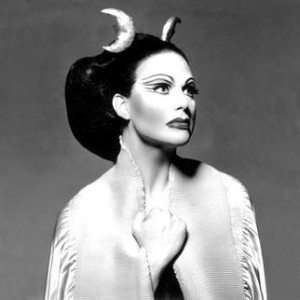Uncovering the Hidden Language
Dance is the hidden language of the soul. Martha Graham
“Dance is th—“
Google already knew what I meant.
This renowned quote has hung on the bedroom walls of countless little girls with starry eyes, and now hangs in the front window of The Trust. I was unaware of Martha Graham (probably because my bedroom walls were otherwise occupied by Michelle Kwan and Sasha Cohen), much to the surprise of a professional dancer friend of mine. “That has been quoted to me from the time I was five years old!” she remarked.
This quote is a big deal to dancers.
For those of you, like me, who are little more than spectators of the world of dance, an introduction to Ms. Graham will be helpful in understanding the significance of her words. Born in 1894, Martha Graham was a groundbreaking dancer whose movements and choreographies were well ahead of her time. The bio on her website (marthagraham.org) characterizes her style as “sharp, angular, and direct” as well as powerful and innovative. A true artist, Martha didn’t confine her creative genius to her craft but collaborated with masters of all mediums to fashion robust and vulnerable masterpieces. The end results were stunning. She tackled many contemporary issues of her day head-on, unafraid to include political, social, psychological, or sexual themes. Before her death in 1991, she created 181 dance compositions which are still performed by her studio schools and dance company. Martha Graham remains a legend in the dance community, as illustrated by the many young dancers who can recite her words.
The physicality of Martha’s work was most intriguing to me when I considered her statement that “Dance is the hidden language of the soul”. She was fascinated by the body and composed many pieces around its natural movement. This led me to wonder what about dance allows for the hidden language to be discovered. How does the body communicate the soul’s intent?
As you may have gathered, I was a figure skater and not a dancer. Though they have their obvious differences, the athletic yet beautiful expression is a common trait. My experience with figure skating leads me to believe that this is also a common feature:
Dance is compelling.
That is, to dance is to be overcome. There is something about dance which gives outlet to the innermost and otherwise inexplicable. The soul speaks and the body is its finest instrument. Martha’s dances were anchored in this understanding. And isn’t there something about dance which stirs up something in the rest of us as if we somehow identify? Am I the only one who can’t sit still in the midst of a particularly stunning performance? Are we not all captivated by the dancer or rather, the manifestation of that hidden language within our souls?
Watch Martha dance as the bride in a piece she choreographed to Aaron Copeland’s “Appalachian Spring”.
